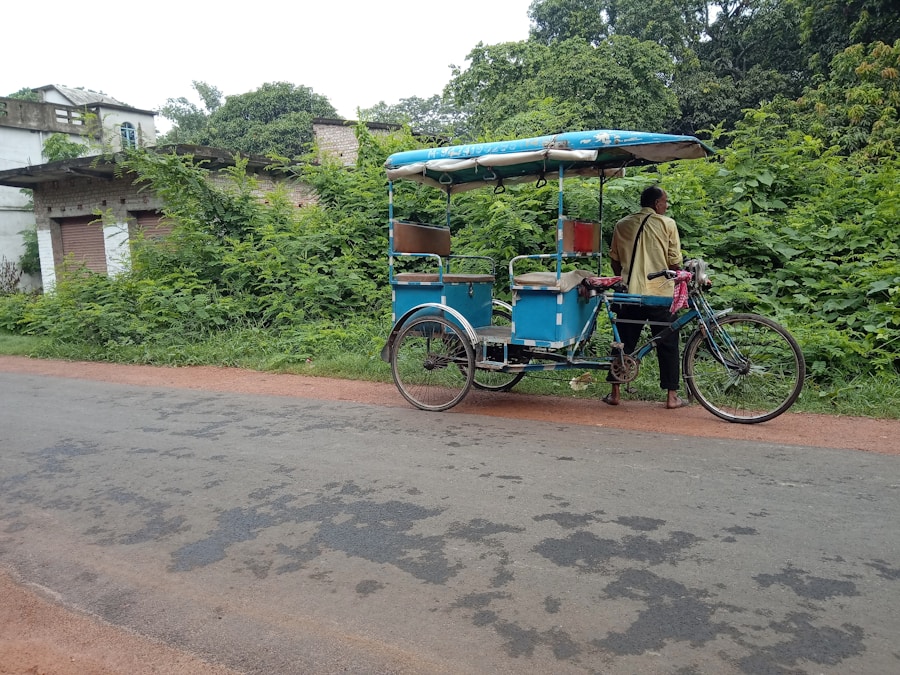When considering the financial implications of travel, the choice between renting a car and utilizing public transportation can significantly influence your overall budget. Renting a car often involves a variety of costs that extend beyond the initial rental fee. These can include insurance, fuel, tolls, and parking fees, which can accumulate quickly, especially in urban areas where parking is at a premium.
For instance, in cities like San Francisco or New York, parking can cost upwards of $50 per day, not to mention the potential for fines if you inadvertently park in a restricted area. Additionally, fuel prices fluctuate, and depending on the distance traveled, this can add a substantial amount to your expenses. On the other hand, public transportation typically offers a more economical alternative.
Most cities have well-established transit systems that provide affordable options such as buses, subways, and trams. For example, a single ride on the New York City subway costs $2.75, while a day pass allows unlimited rides for just $13. This makes public transportation not only cost-effective but also predictable in terms of budgeting.
However, it’s essential to consider the potential hidden costs associated with public transport, such as the time spent waiting for connections or navigating routes that may not be direct. In some cases, the convenience of a rental car may justify the higher expense if it allows for more efficient travel.
Key Takeaways
- Renting a car may be more cost-effective for groups, while public transportation is cheaper for solo travelers
- Renting a car offers convenience and flexibility, but can be stressful in unfamiliar areas
- Public transportation has a lower environmental impact compared to driving a car
- Public transportation is more accessible in urban areas, while renting a car is better for remote destinations
- Using public transportation allows for a more immersive local experience
- Renting a car provides a sense of safety and security, while public transportation may feel less secure in some areas
- Driving can be challenging due to parking and traffic issues, while public transportation avoids these concerns
- Consider your budget and trip itinerary to make the best decision for your travel needs
Flexibility to Create Your Own Itinerary
With a rental car, you have the freedom to create your own itinerary without being bound by bus or train schedules. For instance, if you’re visiting a national park or a rural destination, having a car allows you to access trails and viewpoints that may not be reachable by public transportation.
Enhancing Your Travel Experience
This freedom can enhance your experience, enabling spontaneous detours and unplanned stops that enrich your journey. You can stop whenever you want, take in the scenery, and enjoy the local culture without worrying about missing your bus or train.
The Drawbacks of Renting a Car
However, this convenience comes with its own set of challenges. Navigating unfamiliar roads can be daunting, especially in regions with heavy traffic or complex road systems. Additionally, the responsibility of driving can detract from the enjoyment of the trip, and parking can be a significant hassle in urban environments where spaces are limited and expensive.
The environmental implications of choosing between public transportation and driving are increasingly relevant in today’s context of climate change and sustainability. Public transportation is generally considered to be more eco-friendly than individual car travel. Buses and trains can carry many passengers simultaneously, significantly reducing the per capita carbon footprint compared to single-occupancy vehicles.
For example, according to the American Public Transportation Association (APTA), public transit saves approximately 45 million metric tons of carbon dioxide annually in the United States alone. Conversely, renting a car contributes to higher emissions, particularly if you opt for larger vehicles like SUVs or trucks that consume more fuel. Even smaller cars can have a considerable environmental impact when driven alone over long distances.
However, it’s worth noting that some rental companies are beginning to offer hybrid or electric vehicles as part of their fleets, which can mitigate some of these concerns. Ultimately, the choice between these two modes of transport should consider not only personal convenience but also the broader implications for the environment.
Accessibility: Which Option is More Suitable for Your Destination
The accessibility of your destination plays a crucial role in determining whether renting a car or using public transportation is the more suitable option.
These systems are designed to accommodate high volumes of passengers and provide extensive coverage across various neighborhoods and attractions.
Furthermore, many cities have made significant strides in improving accessibility for individuals with disabilities, offering features such as low-floor buses and elevators in subway stations. In contrast, rural areas or destinations with limited public transport options may necessitate renting a car for practical reasons. For example, if you’re traveling to a remote beach or mountain lodge where public transport is sparse or nonexistent, having your own vehicle becomes essential for accessing these locations.
Additionally, if you’re traveling with family or a group, renting a car may provide greater comfort and convenience than navigating multiple transit routes with luggage in tow. Ultimately, assessing the accessibility of your destination will help inform your decision on which mode of transport best meets your needs.
Local Experience: Exploring a New Place with Public Transportation

Using public transportation can offer travelers an authentic glimpse into local life that is often missed when driving in a rental car. Riding buses or trains allows you to interact with residents and observe daily routines that define the culture of a place. For instance, taking the tram in Lisbon not only provides an efficient means of getting around but also immerses you in the vibrant atmosphere of the city as you pass through various neighborhoods filled with local shops and cafes.
Moreover, public transportation often leads to unexpected discoveries that enhance your travel experience. You might stumble upon hidden gems—a quaint bakery or an artisan market—while navigating transit routes that take you off the beaten path. This serendipity is less likely when driving since travelers tend to stick to main roads and tourist attractions.
Additionally, many cities offer guided tours on public transport that provide insights into local history and culture while allowing you to meet fellow travelers.
Safety is an essential consideration when deciding between renting a car and using public transportation. Statistically, public transportation is one of the safest modes of travel; buses and trains have lower accident rates compared to personal vehicles. Furthermore, public transit systems often have security measures in place such as surveillance cameras and staff presence to ensure passenger safety.
However, safety concerns can arise in certain contexts; for example, late-night travel on public transport may pose risks depending on the city’s crime rates. In such cases, it’s crucial to remain vigilant and choose well-lit stations or stops when traveling after dark. On the other hand, renting a car comes with its own set of safety considerations—such as road conditions and traffic laws that may differ from those at home—which can be challenging for travelers unfamiliar with local driving customs.
Parking and traffic are significant factors that can influence your decision between renting a car and using public transportation. In densely populated urban areas, finding parking can be an arduous task that consumes valuable time and energy. Many cities have implemented strict parking regulations that can lead to hefty fines if violated.
Traffic congestion is another challenge associated with driving in urban environments. Major cities like Los Angeles or Chicago are notorious for their gridlock during peak hours, which can lead to frustrating delays and wasted time on the road.
In contrast, public transportation systems are designed to circumvent these issues by providing dedicated lanes or routes that allow for more efficient travel during busy periods. By opting for public transport, travelers can avoid the stress of navigating traffic while also enjoying a more predictable travel time.
Budget and Planning: Tips for Making the Best Decision for Your Trip
When planning your trip, budgeting effectively is crucial for making an informed decision between renting a car and using public transportation. Start by researching both options thoroughly; consider factors such as rental rates, fuel costs, insurance fees, and potential parking expenses when evaluating car rentals. Websites like Kayak or Expedia can provide comparative pricing for rental cars across different companies.
Simultaneously, investigate local public transportation options by checking city transit websites for fare structures and route maps. Many cities offer day passes or multi-ride discounts that can save money if you plan to use transit frequently during your stay. Additionally, consider downloading transit apps that provide real-time information on schedules and routes; this can enhance your experience by making navigation easier.
Ultimately, weighing these factors against your travel itinerary will help you determine which option aligns best with your budgetary constraints and personal preferences. Whether you choose to rent a car or rely on public transportation will depend on various elements including destination accessibility, environmental considerations, and your desire for flexibility versus convenience.
If you are debating whether to rent a car or use public transportation for your trip, you may want to check out this article for some helpful tips and insights. This cheat sheet on travel can provide you with valuable information to make the best decision for your upcoming adventure. Additionally, if you are interested in exploring a specific city, such as Philadelphia, you can read more about it in this article. Happy travels!
FAQs
What are the advantages of renting a car for a trip?
Renting a car provides flexibility and convenience, allowing you to explore at your own pace and access remote areas. It can also be cost-effective for groups or families.
What are the disadvantages of renting a car for a trip?
Renting a car can be expensive, especially in urban areas with high parking fees. It also requires navigating unfamiliar roads and dealing with traffic and parking.
What are the advantages of using public transportation for a trip?
Public transportation is often more affordable and environmentally friendly. It can also be less stressful than driving in unfamiliar areas and eliminates the need to find parking.
What are the disadvantages of using public transportation for a trip?
Public transportation schedules may not align with your itinerary, and it may not reach all the destinations you want to visit. It can also be crowded and less comfortable than traveling in a private vehicle.
How do I decide whether to rent a car or use public transportation for my trip?
Consider factors such as your destination, the availability of public transportation, the size of your travel group, and your budget. Evaluate the pros and cons of each option to determine which best suits your needs.



0 Comment